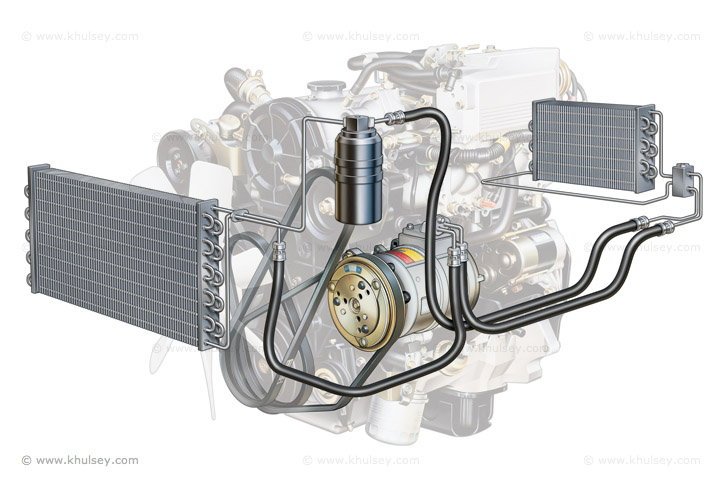The A/C system is a lot more complex than just adding freon when the system no longer produces cold air. The system became low on freon, because of a leak. If freon can leak out air can get into the system. 3% air in the system is the max limit. Every vehicle has a specification for the amount of freon that the system requires. An over charge or under charge can cause poor A/C performance. Pressure readings are used to determine problems in the system. There are low and high side pressure readings. By analyzing the pressure readings from both sides a Technician can determine possible problems with the system. Adding dye will help in locating the leaks, so that they can be repaired. Once the system is leak free and properly charged it should give you good service for some time to come.

There are several filters on an automobile. Many cars today have a cabin filter that filters the outside air before it enters the heater box. This filter needs to be replaced every 10 to 15,000 miles. Driving conditions such as dusty roads may require more frequent replacement of the filter. The cabin air filter is designed to filter the outside air that enters the cabin of the automobile. The outside air enters through vents usually at the base of the front windshield. The air conditioning component shown above is the evaporator out of an older vehicle. This older vehicle was not equipped with a cabin air filter. As you can see a build up of debris has collected on this unit restricting the transfer of cold air to the cabin. This debris could consist of bird feathers, weeds, dust, dirt, molds, and more. The smell of the air passing through this unit may not be pleasant. The heater control unit on the dash gives you an option to recycle the air that is in the cabin. By pushing the recycle button to the on position you close a door that shuts off the outside air.
The blow motor circulates the heating and air conditioning air through the vents, defrost, and floor settings. The speeds of the motor are controlled by the operator by switching the fan speeds on the dash unit. As the different speeds are requested the voltage to the fan blower motor is changed by a resistor. The resistor causes a voltage drop that slows the fan motor speed. You may have experienced a vehicle that only worked on one or two speeds, if so the resistor was defective. The blower motor may be noisy this could be worn bushing in the motor or the cage is out of balance.

